Latin name: Livistona
Category: evergreen trees
Homeland: tropical Africa, Southeast Asia, Australia, Oceania
Liviston palm - a fan miracle of nature
Livistona (Livistona) - the genus is represented by thirty varieties of crops, which are exotic highly decorative perennial trees that occupy not the last place in the Arecaceae family.
Liviston owes her name to Patrick Murray, a Scottish botanist living in Livingston, who in his short thirty-nine-year life, thanks to his friend the Scottish doctor Andrew Balfour, was able to become famous for his collected collections of a thousand different plants. Not the last place in this collection was occupied by huge palm trees with very original, fan-shaped, leaf plates resembling a fan.
Southeast Asia, New Guinea, Polynesia, Australia can be considered the birthplace of this interesting, unpretentious, fast-growing palm tree, from where it spread to all latitudes of the globe.
Under natural conditions, wild-growing Liviston palms are represented by evergreen, exotic plants with gigantic sizes, reaching twenty-five meters in height with a well-developed rhizome. A tree similar to a palm tree has found distribution in areas that are characterized by high levels of humidity. They are attracted by tropical forests, coastal places of rivers and sea shores, swampy areas.
Here in the wild, they acquire a rough, brown, fibrous trunk, the diameter of which reaches twenty centimeters and is a springboard for the remnants of fallen leaves, represented by scars and petioles. The top of the trunk is decorated with a crown of beautiful leaves. Unique decorative with a beautiful dissection of fifty to ninety segments and a rounded configuration, palm leaf plates grow up to one hundred centimeters in diameter. The width of each segment reaches three centimeters, and its length is sixty centimeters.
Local residents use these huge leaf blades in the national economy. They make original and unusual hats, mats and baskets.
The leaves are dark green in color with an admixture of a grayish tint and a glossy sheen. And they are held by long two-meter spiky petioles with teeth directed downwards.
Flowers small three-millimeter, pink, cream or white colors are collected in large, axillary, branched inflorescences, reaching a meter in length. The final chord of flowering is the formation of rounded three-centimeter fruits.
A houseplant similar to a palm tree is very fond of flower lovers. The popularity of this leafy-decorative miracle is growing for its unpretentiousness and originality, the ability to decorate the interior of a residential apartment, hotel, office space, in the lobby of any public institution. Its height can reach two meters in height, it loves spacious territories.
When growing livistons, it must be remembered that a palm tree cannot do without high levels of air humidity, active sun and elevated temperature values.
Livistona perfectly cleans the air space from harmful impurities.
Indoor plants that purify the air well are Schefflera, Dieffenbachia, Dracaena, Spathiphyllum, Sansevieria.
Liviston palm is loved not only for its beauty, decorative and useful properties. Signs and superstitions have not bypassed this houseplant that looks like a palm tree. In folk beliefs, it is stipulated that the Liviston palm takes part in the neutralization of negative energy, acts as a dope - nourishes and inspires vitality and positive energy, pushes for decisive action and inspires confidence in achieving the tasks facing a person. Helps to get rid of depression and melancholy.
A comfortable environment and friendly relations between employees are being established in the working premises. You need to admire and believe that the liviston palm is flowers in a modern interior that gives people joy.
The unpretentious indoor Liviston palm trees are without a doubt the most original representatives of the palm family. Types of indoor palms are varied. The same beauties are washingtonia, hamedorea, date palm.
Liviston's photo of its various species can be viewed in the next section of the article.
Liviston species
Chinese Livistona (Livistona Chinensis)
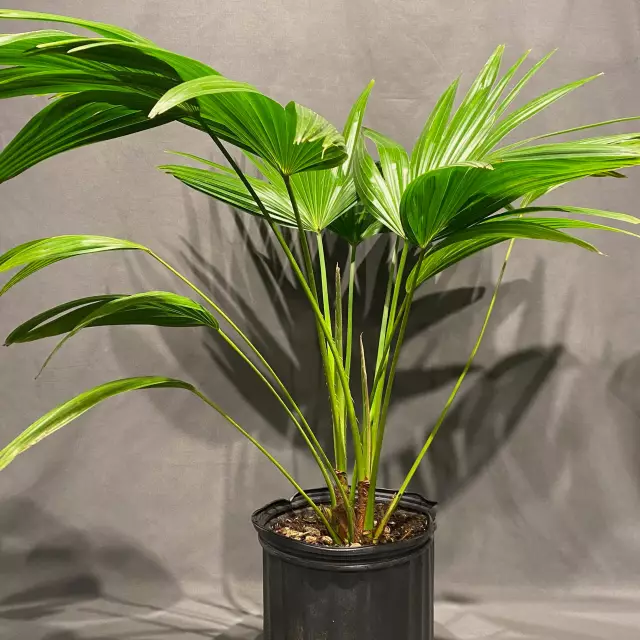 This species is native to southern China. But not only Chinese people admire this beauty. This palm-like tree has a very wide distribution range. Livistona chinensis can be found and admired for its decorative qualities in Japan, Taiwan, and the islands of the South China Sea. It was introduced to Florida and the Caribbean.
This species is native to southern China. But not only Chinese people admire this beauty. This palm-like tree has a very wide distribution range. Livistona chinensis can be found and admired for its decorative qualities in Japan, Taiwan, and the islands of the South China Sea. It was introduced to Florida and the Caribbean.
There are also other names for this palm - liviston jade, patching.
Here, in a natural setting, the palm tree boasts a twelve-meter height, and the width of the stem reaches fifty centimeters. At the bottom, the outer part of the stem is slightly serrated. Bending fan-type leaves are composed of more than fifty folded segments. The leaves are held on the trunk by one and a half meter wide petioles. A flowering palm tree surprises with unique axillary inflorescences, reaching more than a meter in length.
It looks beautiful and perfectly adapts to moderately warm rooms. Despite the fact that livistons are non-flowering houseplants, they are an amazing decoration for any room, office or any other institution, they will look chic in a variety of compositions located on the territory of the winter garden.
Liviston round-leaved (Livistona rotundifolia)
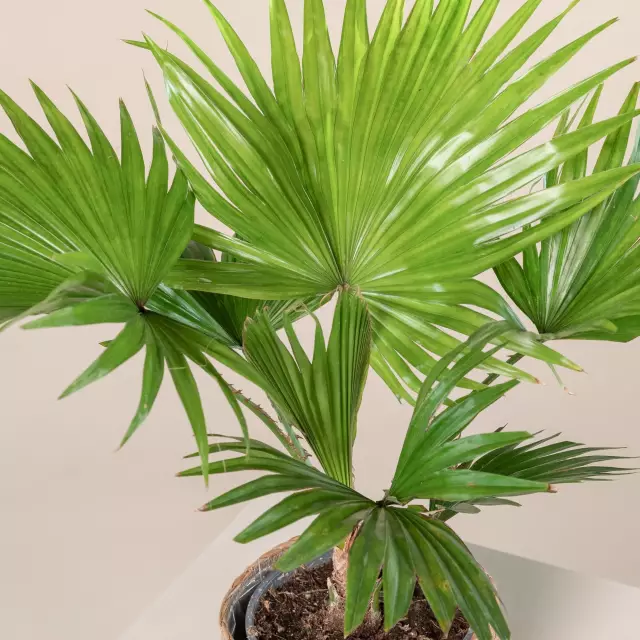 Liviston rotundifolia palm is native to the Moluccas and Java with its sandy coastal soils. Here, these huge, elegant, fan palms, with a thin, upright brown trunk, reach a height of twenty-five meters. The crown is decorated with dark green, glossy, rounded leaf plates, represented by folded segments, the diameter of which is one and a half meters. In nature, it blooms with yellow flowers, collected in axillary two-meter inflorescences. Over time, the flowers become round berries.
Liviston rotundifolia palm is native to the Moluccas and Java with its sandy coastal soils. Here, these huge, elegant, fan palms, with a thin, upright brown trunk, reach a height of twenty-five meters. The crown is decorated with dark green, glossy, rounded leaf plates, represented by folded segments, the diameter of which is one and a half meters. In nature, it blooms with yellow flowers, collected in axillary two-meter inflorescences. Over time, the flowers become round berries.
Due to its original decorative properties and good adaptation at home, liviston rotundifolia can be contemplated more often than others as an indoor culture. The only drawback is the lack of flowering.
Southern Livistona (Livistona australis)
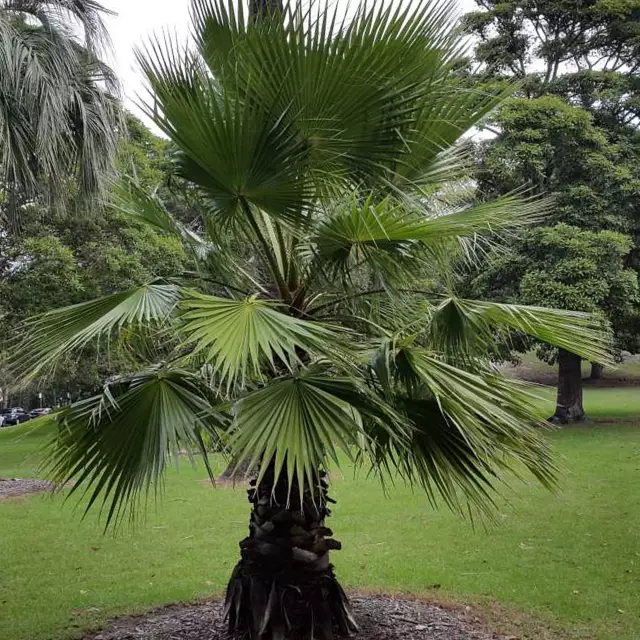 The homelands of the southern livistons are Eastern Australia with its subtropical wet forests. Palm-like trees can exceed the thirty-meter height barrier here, and the trunk in the crossbar is within forty centimeters.
The homelands of the southern livistons are Eastern Australia with its subtropical wet forests. Palm-like trees can exceed the thirty-meter height barrier here, and the trunk in the crossbar is within forty centimeters.
The southern variety of the palm tree is decorated with dark green leaves, the shape of which is similar to a fan. Leaves rise on two-meter brown petioles, which are covered with sharp spines. Branched axillary inflorescences can reach a length of up to one hundred and thirty centimeters.
The Australian fan palm is considered a valuable ornamental crop and is widely used for landscaping various premises and semi-warm greenhouses.
Liviston deceptive (Livistona decipiens)
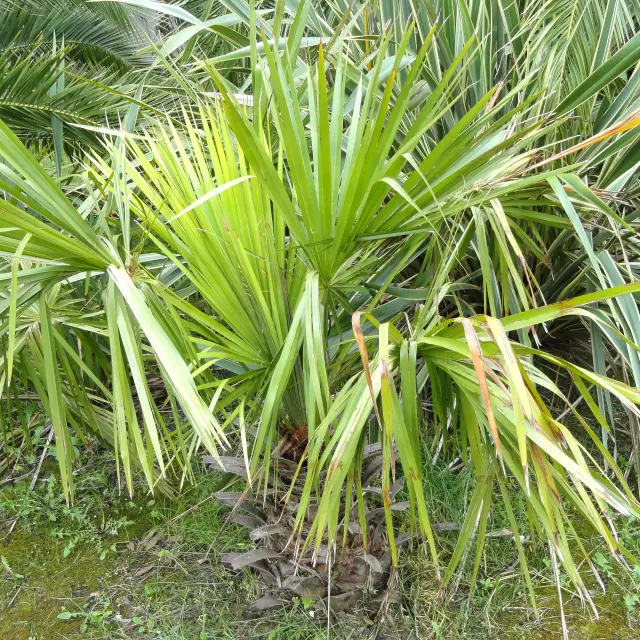 A slow-growing variety of Livistona with a single stem. An adult tropical culture reaches a height barrier of twelve meters. The stem with a diameter of twenty-five centimeters, strewn with old dry petioles, seems massive and spectacular.
A slow-growing variety of Livistona with a single stem. An adult tropical culture reaches a height barrier of twelve meters. The stem with a diameter of twenty-five centimeters, strewn with old dry petioles, seems massive and spectacular.
Fan-shaped, drooping leaf plates organize a chic large crown. The color of the leaves is very original. The upper side is dark green with a glossy sheen, and the bottom leaves are grayish with a waxy sheen.
Liviston Maria (Livistona Mariae)
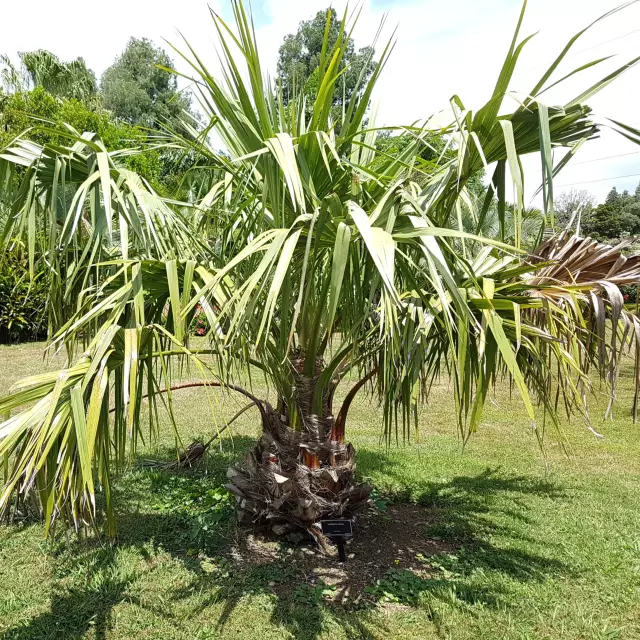 A very showy, high-growing 30-meter Liviston specimen with a wide and massive brownish-gray stem. Two-meter cuttings hold leaves strongly leaning down, imitating a fan. With age, beautifully dissected leaves change their color from red-pink to rich green with an admixture of blue.
A very showy, high-growing 30-meter Liviston specimen with a wide and massive brownish-gray stem. Two-meter cuttings hold leaves strongly leaning down, imitating a fan. With age, beautifully dissected leaves change their color from red-pink to rich green with an admixture of blue.
The flowers form panicle configurations, their colors are pale cream or hazy yellow. In autumn, a wonderful palm tree has a period of appearance of rounded two-centimeter fruits.
Liviston palm care at home
If you want to bring exotic notes to your apartment or office space, you need to purchase a Liviston fan-type palm. This tropical houseplant - original, unpretentious and resistant to care does not require complex costs and efforts. In order for an indoor palm tree to have a chic, decorative and attractive appearance, it needs to ensure systematic care with all the subtleties and features.
Choice of location and temperature
Comfortable places for the deployment of a large houseplant are windows on the western side. For the symmetrical development of a light-loving bush, reaching for a light source, it is desirable to turn it one hundred and eighty degrees. This procedure should be regular with an interval of two weeks.
In the summer, an unpretentious large houseplant will not refuse to move to the garden, to large trees that will create shade and pleasant coolness for it.
Liviston does not respect drafts and intense heat.
If possible, you can put a palm tree on the balcony in the summer. The scorching rays of the sun must be shaded so that the leaves do not suffer from overheated window glass.
Fresh air for a palm tree is required. We ventilate the room regularly.
In the dark off-season, it is advisable for a houseplant to organize a backlight.
During the growing season, the desired temperature range for comfortable development is 20-25°C. Winter coolness with a temperature of 15-18°C, but not lower than 12°C.
Humidity and watering
This tropical houseplant needs high humidity in the air around it. This can be ensured by regular spraying and wiping the leaf plates. The tropical beauty will not refuse a warm shower with a frequency of thirty days.
To the question: how often to water a palm tree? There will be a short answer.
Drying of the earth mixture in the flowerpot should not be allowed, as well as stagnant water.
The plant needs abundant watering with soft and warm water in the summer with a frequency of three to seven days. We reduce winter watering to two times a month, controlling the condition of the soil in the pot. It should be slightly damp.
Soil and its top dressing
The easiest way is to use a ready-made mixture intended for palm crops. An inpidually prepared soil mixture should have the following ingredients: clay-soddy soil, humus-leaf soil, peat, rotted manure, sand and charcoal (2:2:1:1:1:1).
To stimulate an exotic beauty, it must be fed during the growing season with special liquid mineral fertilizers for palm crops. We combine the process of top dressing with the next watering. The crown of the palm tree is also fed, treated with microelements.
Liviston transplant
A spring transplant at four-year intervals will be beneficial for indoor palms. The main indicator of the need for transplantation is the appearance of roots above the surface of the substrate or from drainage holes. It is advisable to cut off the roots with the appearance of a felt layer on them with a sharp knife. When transplanting the plant, gently press the soil in the flowerpot slightly. For large palms, it is enough to replace the top layer of the substrate.
A good drainage layer is required.
Liviston breeding
Livistona palm does not grow. It is propagated by seeds, the shelf life of which is one year. Soaked for twelve hours, the seeds are planted in a peat-perlite mixture no deeper than one centimeter at the end of winter. Create the conditions of a mini-greenhouse with temperature indicators of 20-25 ° C with regular ventilation.
The first leaf of a young palm tree can please after a hundred days after planting. Greenhouse effect conditions are cancelled. When a young leaf reaches a four-centimeter length, seedlings can be planted separately in ceramic flowerpots, installed in a room with low lighting, without bright sun, for one year.
Liviston palm pests
If the room is too hot and dry, unexpected guests in the form of scale insects, mealybugs, whiteflies, and spider mites can settle on a palm tree. So that the parasites do not suck the juice from the leaves of a houseplant, it must be immediately treated with insecticidal preparations: Aktara, Phytoferm, Actellik, Akarin.
Difficult Growing Moments
- Livistona leaves drooped and turned yellow - the substrate is too dry, it is necessary to control the regularity of watering.
- The ends of the leaf plates have a brown tint - the air in the room is too dry.
- The leaves have darkened - the temperature in the room is too low.
- The palm grows too slowly - the plant needs to be fed.
- Darkening and dying of the lower leaves of an adult palm tree - this process is considered natural.
How to revive a dried palm tree? First of all, we remove the dried leaves. We transplant the plant into a larger new flowerpot with a fresh soil mixture. We pamper the transplanted palm with abundant watering so that some water appears in the drainage holes. Water must be drained from the tray. Wipe the stem and leaves with a damp cloth. To avoid any infectious misunderstandings, a fungicide solution can be applied.
With quality care, this unpretentious indoor plant will delight with its beauty and decorate the interior for many years.
No less interesting indoor flowers with photos and names can be contemplated if you open the catalog of indoor plants from a to z on the site.




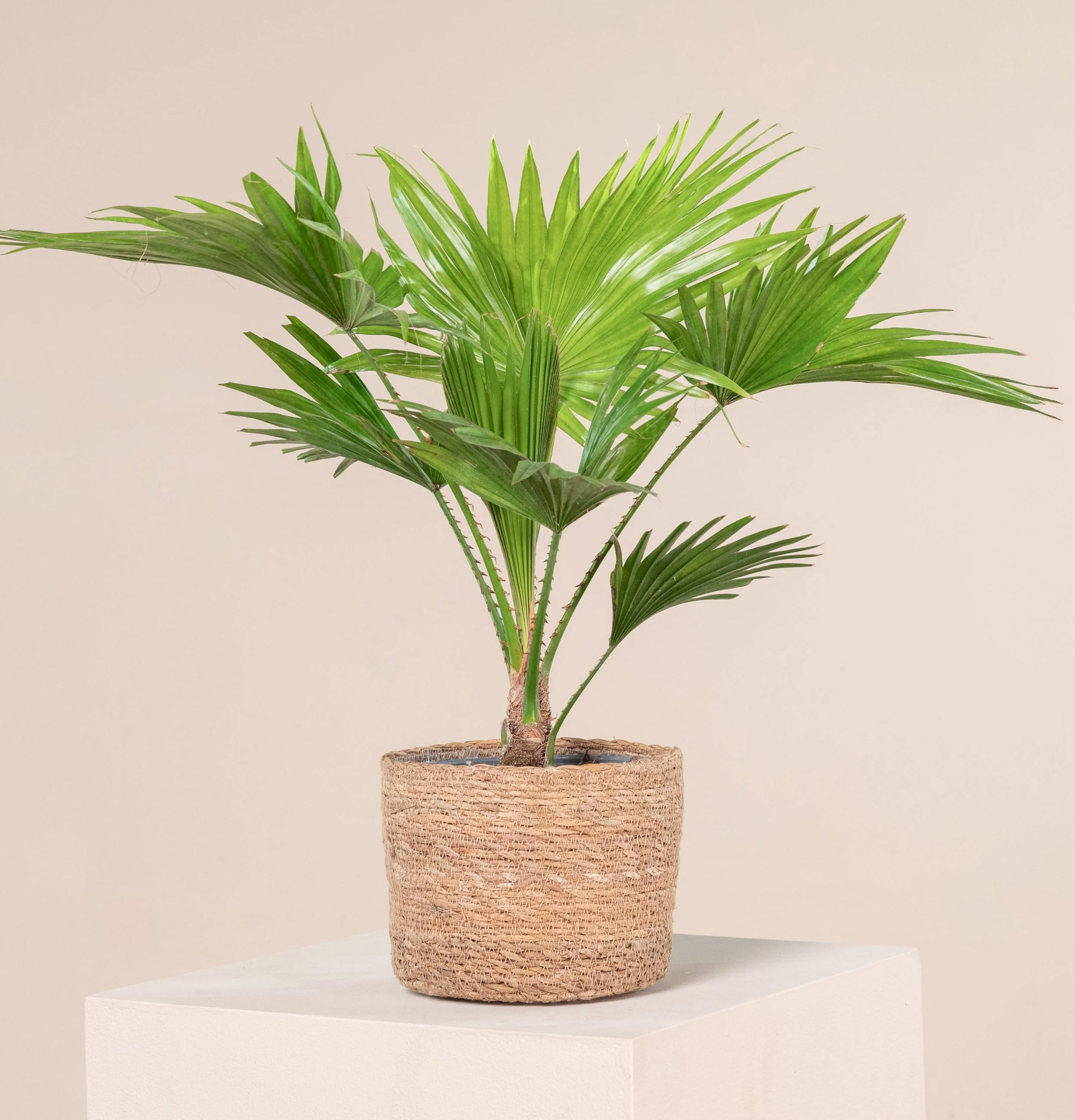










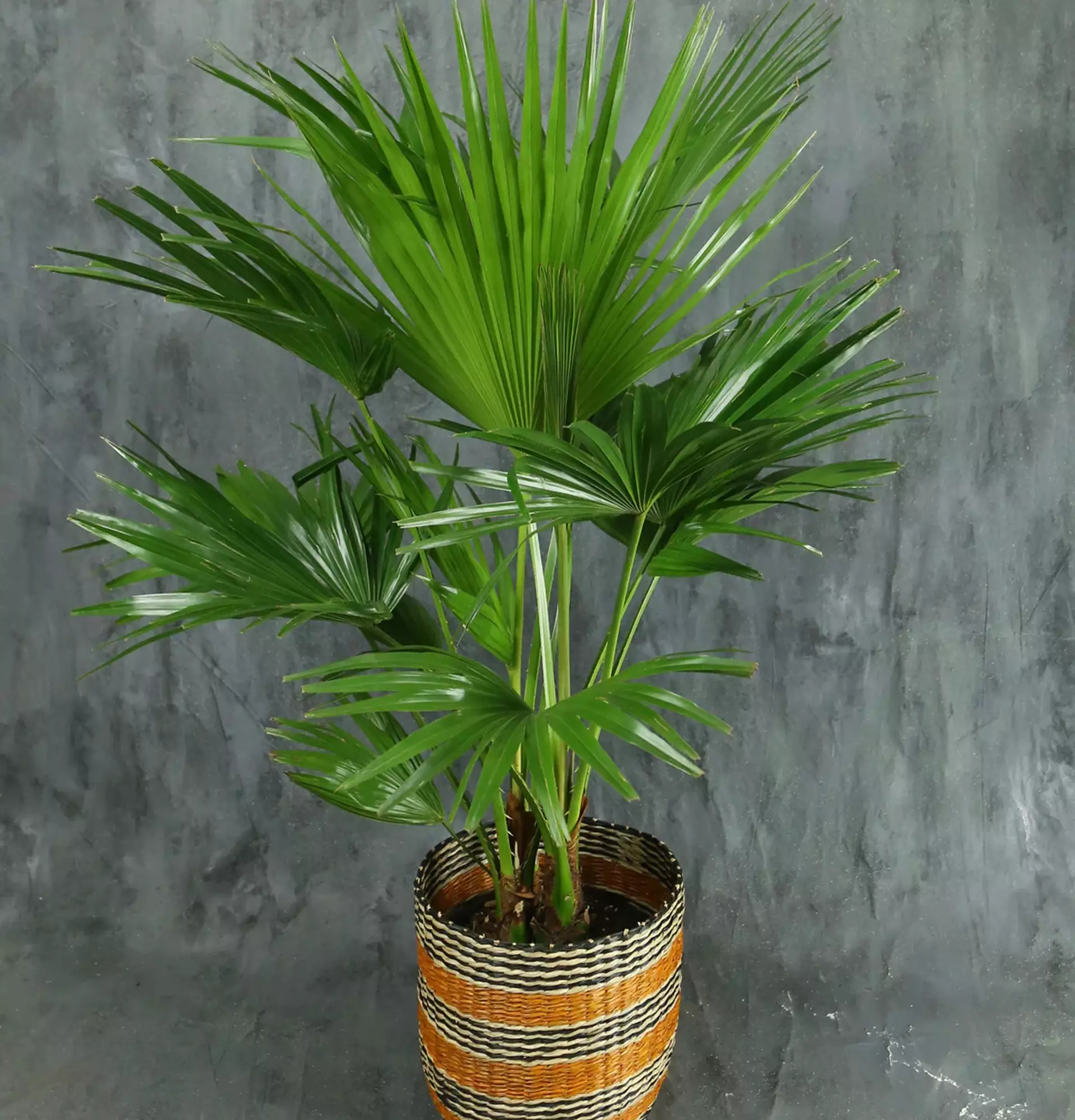
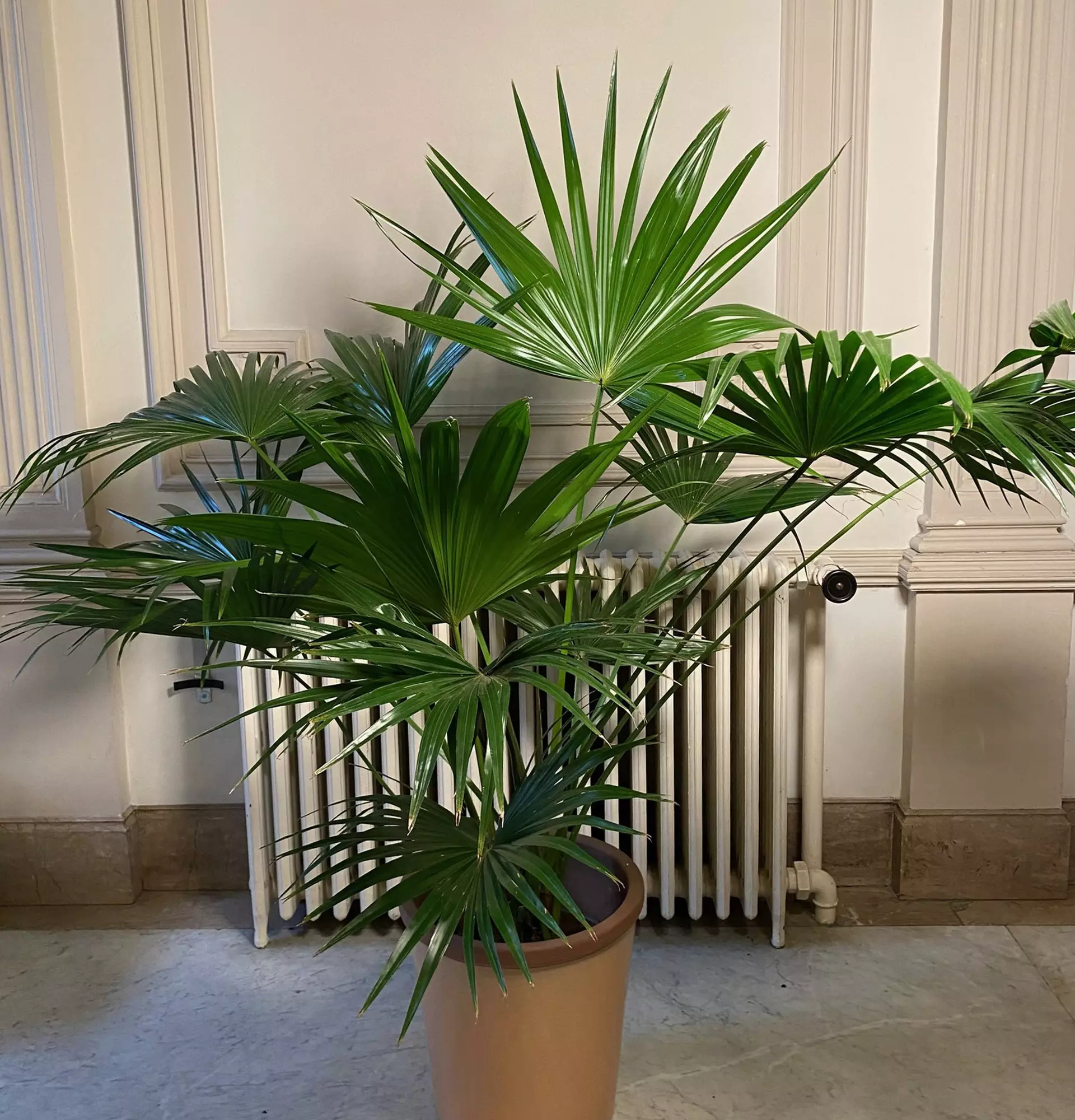

Write comments
Comments